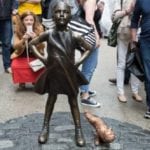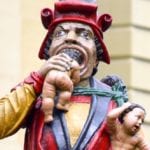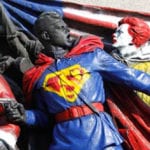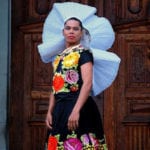 Animals
Animals  Animals
Animals  History
History 10 Most Influential Protests in Modern History
 Creepy
Creepy 10 More Representations of Death from Myth, Legend, and Folktale
 Technology
Technology 10 Scientific Breakthroughs of 2025 That’ll Change Everything
 Our World
Our World 10 Ways Icelandic Culture Makes Other Countries Look Boring
 Misconceptions
Misconceptions 10 Common Misconceptions About the Victorian Era
 Mysteries
Mysteries 10 Strange Unexplained Mysteries of 2025
 Miscellaneous
Miscellaneous 10 of History’s Most Bell-Ringing Finishing Moves
 History
History 10 Great Escapes That Ended Right Back in Captivity
 Weird Stuff
Weird Stuff 10 Fascinating Things You Might Not Know About Spiders
 Animals
Animals 10 Animals That Humiliated and Harmed Historical Leaders
 History
History 10 Most Influential Protests in Modern History
 Creepy
Creepy 10 More Representations of Death from Myth, Legend, and Folktale
Who's Behind Listverse?

Jamie Frater
Head Editor
Jamie founded Listverse due to an insatiable desire to share fascinating, obscure, and bizarre facts. He has been a guest speaker on numerous national radio and television stations and is a five time published author.
More About Us Technology
Technology 10 Scientific Breakthroughs of 2025 That’ll Change Everything
 Our World
Our World 10 Ways Icelandic Culture Makes Other Countries Look Boring
 Misconceptions
Misconceptions 10 Common Misconceptions About the Victorian Era
 Mysteries
Mysteries 10 Strange Unexplained Mysteries of 2025
 Miscellaneous
Miscellaneous 10 of History’s Most Bell-Ringing Finishing Moves
 History
History 10 Great Escapes That Ended Right Back in Captivity
 Weird Stuff
Weird Stuff 10 Fascinating Things You Might Not Know About Spiders
10 Monuments More Controversial Than The Confederate Statues
The word “monument” comes from the Latin verb monere, meaning “to warn.” The media coverage around the debate of whether or not the Confederate monuments in the US should be removed has highlighted something significant: what historians have argued as being the inherent politics ingrained in our monuments. This goes back to the classical age, when Greeks and Romans with political or military power used monuments to create narratives that united entire civilizations through a historical memory and national identity.
Of course, monuments can be mired in controversy, as has been exemplified by the Confederate statue debate, which asks whether it is more important to preserve history, such as with a General Lee monument, at the risk of perpetuating the racial stigma felt by African Americans. This list casts the net wider to other monuments around the world which are also controversial, though in some cases, the controversy is not immediately apparent.
10 Diana Fountain Problems

The controversy surrounding Princess Diana did not stop with the fatal collision in Paris that ended her life. Her monument fountain has been plagued since its opening to the public in 2004. As it so happens, it had to be closed and reopened twice within a short span of ten months. The first unscheduled closure came only two weeks after its unveiling by the queen in the summer of 2004, when three people tripped and fell in the slippery Cornish granite channel. They had to be hospitalized.[1]
In addition, the pumps used to add the bubbling mountain stream effect were blocked by stray leaves, leading to the flooding of the fountain, which turned the surrounding area into a muddy quagmire. The pumps were fixed, and the fountain was reopened, this time with a park patrol to ensure safety, though it closed for a second time for a complete rebuilding that began in January 2005. This project resulted in some of the grassy turf being removed and replaced by something more akin to a municipal parking lot or a road’s shoulder, which undermined the designer’s concept of a fountain that interacted delicately with Hyde Park’s natural splendor.
9 Sioux Issue With Crazy Horse Memorial
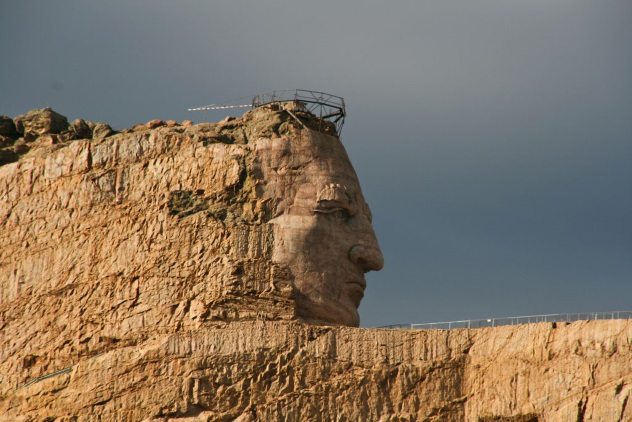
Located 27 kilometers (17 mi) from the presidential portraits on Mount Rushmore in the Black Hills of South Dakota is the world’s largest mountainside carving. It has been under construction since 1948, and its projected completion date is circa 2120. This means that efforts so far haven’t reached the halfway point of completion. The gargantuan statue bears the figure of Crazy Horse, whose leadership proved decisive and crucial in the annihilation of Custer’s 7th Cavalry at the Battle of the Little Bighorn, which came after military intervention in the area owing to the discovery of gold.
This statue has been criticized by many of the Sioux, as it goes against Crazy Horse’s crusade in 1876 to preserve the sanctity of the Black Hills. They see it as “a violation of the same spirituality that Crazy Horse fought so valiantly to defend.”[2] John Fire Lame Deer, a noted Lakota Sioux medicine man, once remarked, “The whole idea of making a beautiful wild mountain into a statue of him is a pollution of the landscape—it is against the spirit of Crazy Horse.” These issues aren’t surprising, as there was no collective voice from the Native American people regarding the construction of the monument on Sioux land; they were left out of the conversation.
8 Peru’s Jesus
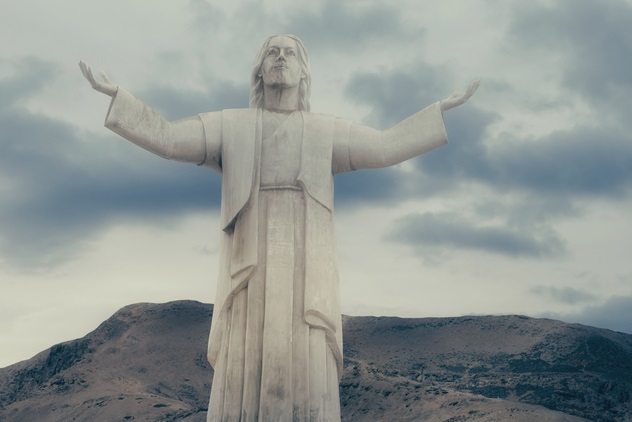
The Jesus in question is a 37-meter (120 ft) statue of Jesus titled Christ of the Pacific, located in Peru. It was seen as former President Alan Garcia’s parting gift of gratitude to the country as he left office in 2011. Some were critical of the project, calling it vain, which Garcia defended by stating that he contributed around $36,000 of his own money toward the statue’s construction, not for personal gain but because it “blesses Peru and protects Lima.”[3] The former president also mentioned a donation of $1 million by a “generous Brazilian businessman” in order to complete the towering figure.
This, for ultranationalist Peruvians, reeked of cultural imperialism and was a big indicator of Brazil’s growing wealth and encroachment on other Latin American countries. Others found issue with the statue’s physical and formal components, calling it derivative of the famous Christ statue in Rio de Janeiro, which undermines Peru’s brand identity.
7 Peter The Great Moscow Snub
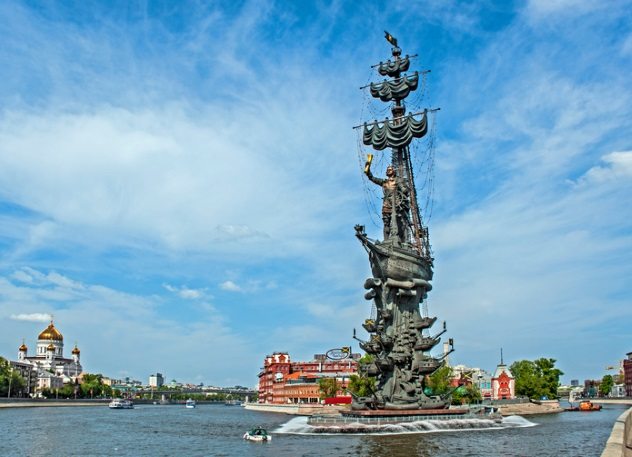
The statue of Peter the Great, located in Moscow on an artificially constructed island, is taller than the Statue of Liberty and heavier, too. Many have been critical of the statue’s rather bizarre design, which features the giant figure of Tsar Peter standing behind the wheel of a frigate and clutching a golden scroll, while smaller ships are seemingly sticking out from under his feet. One Moscow resident, Vladimir, who lives in an apartment block opposite the giant tsar, stated:
That’s the ugliest statue of the end of the 20th Century. I see it all the time. All the time! Although I don’t notice it as much now: the eye doesn’t see what it doesn’t like! On a bridge opposite the statue, I ask passers-by what they think of the oversized tsar. “It’s disgusting!” one man tells me. “It’s awful,” says a woman, “It’s just too huge. Big doesn’t mean beautiful.” [4]
Interestingly, Tsar Peter shared similar disdain toward Muscovites, as he was known to have hated Moscow and saw Saint Petersburg as the greatest city of the Russian Empire. The statue was commissioned by former Moscow mayor Yuri Luzhkov (once a very powerful politician). The task of building it was given to his friend, designer Zurab Tsereteli, in the 1990s. But when the mayor fell out with the Kremlin in the mid-2000s and was sacked, the future of the statue came into question. Acting mayor Vladimir Resin hinted that the infamous monument needed to be moved, perhaps to Saint Petersburg. Such a project would have cost the city millions, though it seems the residents wouldn’t have cared, given their opinions of it. However, it remains there today. Perhaps another controversy is in the cards in the future of this giant historical figure.
6 MLK Statue Inscription
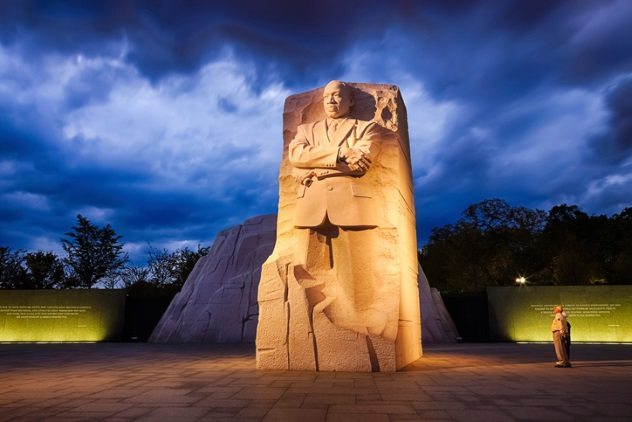
The commanding 9-meter (30 ft) statue of Martin Luther King Jr., arms crossed and emerging from the “Stone of Hope,” is not without controversy, precisely because it doesn’t help to reflect King’s humility. The “drum major” inscription on the monument was unfortunately paraphrased so that it appeared to sound arrogant. In 2011, acclaimed author Maya Angelou took issue with the inscription reading, “I was a drum major for justice, peace and righteousness.”[5] Angelou stated that this was taken from King’s original words at a 1968 sermon at Ebenezer Baptist Church in Atlanta:
If you want to say that I was a drum major, say that I was a drum major for justice. Say that I was a drum major for peace. I was a drum major for righteousness. And all of the other shallow things will not matter.
Cutting down the quote changed the meaning, Angelou argued. She said the inscription should be revised. However, the quote wasn’t revised but rather removed entirely, as the original sculptor, Lei Yixin, said removal was the best way to ensure the memorial’s structural integrity. To add to this, the fact that the monument’s sculptor was Chinese, rather than being from the US, let alone not being African-American, was also an issue for some.
5 Queen Victoria Statue Moves From Dublin To Sydney
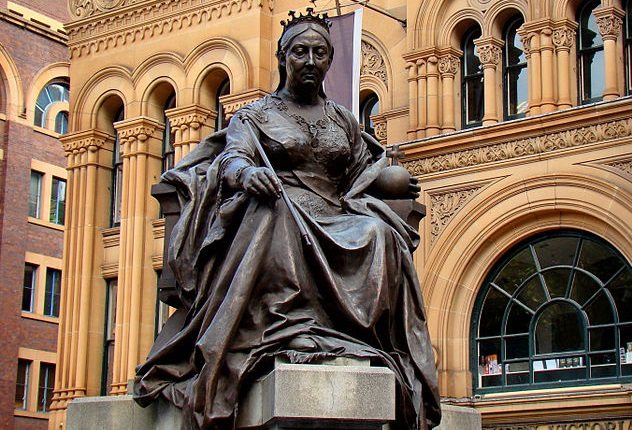
The controversy surrounding this statue of Queen Victoria, since Ireland gifted it to Australia in 1986, has emanated from declassified Irish cabinet papers which show objections from former Prime Minister John Bruton and the director of the National Museum of Ireland, John Teahan. Bruton was finance minister at the time, while Prime Minister Garret FitzGerald backed the plan to send the statue, which was originally unveiled at Dublin’s Leinster House in 1908, to Australia. These declassified papers revealed a memo from the museum director, Teahan, objecting to the plan because it was the work of an Irish artist, John Hughes.
The memo stated, “I advise that such a figure be retained and protected until we have grown up sufficiently to look that Queen, long dead, straight in the eye.”[6] Bruton took this same view when the matter came before the cabinet, with another memo stating, “The minister for finance strongly objects to the removal of the Queen Victoria statue from Ireland. The monument is representative of one of the many traditions of Irish history. It is part of our heritage in no less a way than Norman or Viking remains.”
Teahan’s memo speaks to another controversy surrounding the statue of Queen Victoria: that of its very problematic links to Britain’s colonial past. This was highlighted in a separate article in 2016, which covered and encouraged a debate surrounding the possibility of removing a different statue of Queen Victoria.
4 Yasukuni Shrine To War Criminals
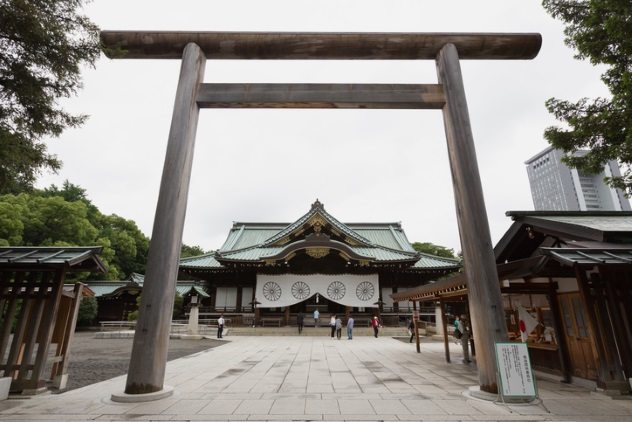
Japan’s past militarism has been scrutinized by historians for decades. Much is known about its troubling past of human rights abuses on a colossal scale, felt particularly by China and Korea, which greatly suffered under Japanese militarism. Japan’s politicians have endeavored to reconcile their problematic history and build strong relations with these countries. However, accusations of whitewashing and erasure of key events and circumstances has thrown Japan into the limelight many times.
In this particular instance, the controversy surrounded a visit of Japanese leaders to the Imperial Shrine of Yasukuni in Tokyo in 2016. The visit outraged China and South Korea because the shrine honors 14 Japanese leaders convicted by an Allied tribunal as war criminals along with the other war dead.[7] The South Korean foreign ministry issued a statement, expressing “deep concern and disappointment” over the Japanese political leaders’ decision to visit the shrine, along with an urging of these leaders to “gain trust from neighbouring countries and the international community by showing an act of humble introspection and sincere self-reflection on the foundation of the correct perception of history.”
3 Franco Monument Slave Labor
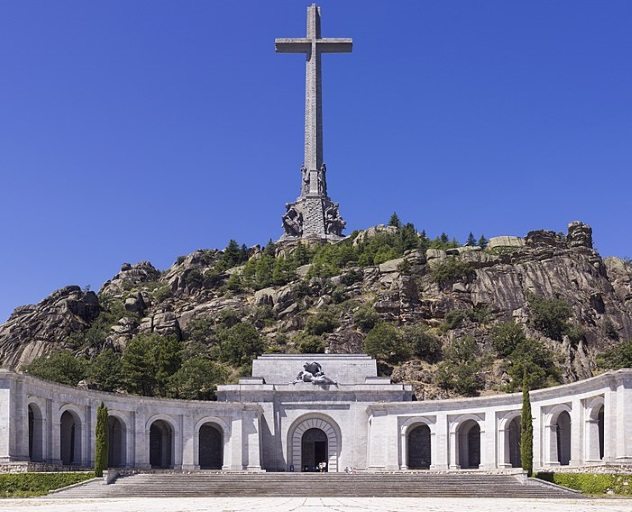
Spain has Francisco Franco to thank entirely for the Valley of the Fallen monument. It is composed of a huge granite cross that rises up from the rock of the Sierra de Gaudarrama, which has a giant esplanade carved out of it to make a platform for the basilica underneath. The monument’s vaulted crypt was bored into the mountain as part of its construction, which spanned nearly two decades, from the height of World War II to the 1950s.
The site of the monument is significant for its importance during the Spanish Civil War. Anyone familiar with Hemingway’s For Whom the Bell Tolls would recognize the area around Valley of the Fallen as the location of a battle fought between Madrid and Segovia in May 1937. Only Franco and like-minded ideologist Antonio Primo de Rivera had the honor of burial inside the monument’s basilica, unlike the remains of around 40,000 bodies from both sides that are said to litter the surrounding forest floor.
The monument is certainly divisive, given events in its history, and security is tight as a result. In 1999, the site was bombed by Maoist anti-fascists. Not just a symbol of Franco’s fascist regime, its actual construction is also very controversial. Franco didn’t shy away from using prisoners of war to help the construction along, and the wholesale forced labor has been compared to something like a Nazi concentration camp.[8]
2 Columbus Evicts Local Populace
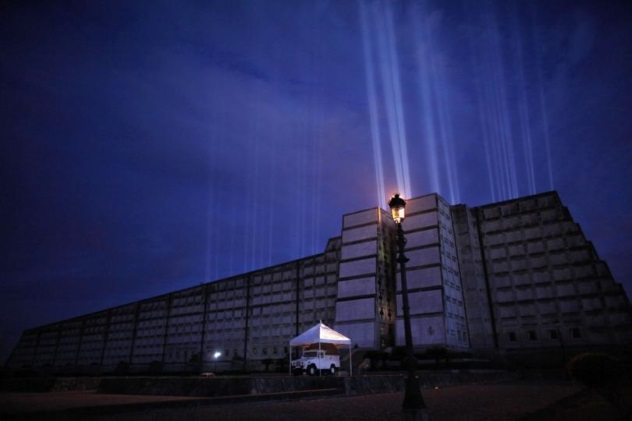
The colossal monument in Santo Domingo, a lighthouse which can cast cross-shaped laser beams that can be seen for more than 113 kilometers (70 mi), is claimed to contain the remains of Christopher Columbus. The lighthouse has been very problematic for two reasons: The first concerns Columbus’s historical significance in the Dominican Republic, and the second is the extravagant cost in addition to measures taken to secure the land for its construction.
Many Dominicans blame Columbus for the extermination of the original indigenous population, the Taino, and the ensuing import of African slaves. The island was Spain’s first New World Colony.
The public has also been very critical of the government’s methods for constructing the monument. First, it ended up costing much more than projected, around $60 million more. More to the despair of the local populace, the government also forcefully evicted about 8,000 families to make room for the lighthouse and its surrounding gardens. Thousands more would be evicted in a six-year government scheme to rebuild the city in an attempt to attract tourists.[9] A local priest said the lighthouse symbolized “evictions, official high-handedness, and extravagance” by the government. To add further insult, harsh measures were taken against anti-lighthouse protests in 1992, when police shot two demonstrators dead. The legacy of Columbus will surely remain controversial for centuries to come.
1 From Zyklon B To Building The Holocaust Memorial
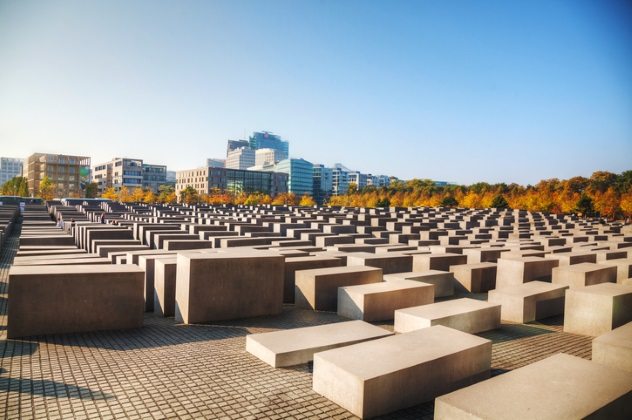
Inaugurated in 2005 in Berlin, the Memorial to the Murdered Jews of Europe, otherwise called the Holocaust Memorial, is located near the Brandenburg Gate, the most famous symbol of German nationhood, and the Reichstag building. It was designed to express Germany’s remorse for the Holocaust and honors the memory of the six millions Jews murdered by Hitler’s “Final Solution.” The monument is somber, measuring 600 square meters (6,500 ft2), with 2,711 concrete slabs arranged in a grid pattern on a sloping field.
In 2003, information emerged that linked Degussa, the company constructing the monument, to Degesch, the company that delivered Zyklon B, the gas used to murder Jews, to the concentration camps. Degussa was once part of Degesch. The memorial’s trustees were horrified, with one stating, “We had to think about the feelings of the victims.” Construction had to be immediately suspended in order to find another firm. Many German businesses enabled the Nazi war machine, but according to Lea Rosh, the president of Germany’s association of murdered Jews, this was “a boundary that had been crossed,” beyond decency and reasonable judgment.[10]
A novice writer interested in history, the paranormal and the occasional conspiracy theory.
Read more about monuments around the world on “>10 Unusual Statues And Monuments From Around The World and 10 Famous Landmarks That We Almost Lost.
